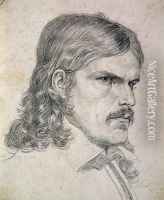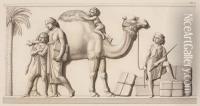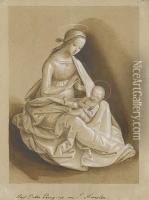Samuel Amsler Paintings
Samuel Amsler was a Swiss engraver born on December 15, 1791, in Schinznach-Dorf, Aargau. He developed an interest in the arts at an early age and pursued his passion for engraving by studying under the tutelage of renowned Swiss artist Heinrich Pfenninger. Amsler's dedication and skill in his craft soon earned him recognition, and he decided to further his studies to refine his techniques.
In 1815, Amsler moved to Munich to study under the German engraver Johann Gotthard von Müller, who was a key figure in the revival of engraving in Europe. Amsler's talent flourished under Müller's guidance, and his work began to gain more attention. Seeking to expand his horizons, he later journeyed to Paris, which was then the epicenter of the European art world. There, Amsler worked with the French engraver Charles Clément Bervic, who was known for his exquisite line engravings of classical and contemporary subjects.
Throughout his career, Samuel Amsler was known for his exquisite engravings that captured the nuances of paintings and sculptures. He worked on reproductions of works by artists such as Raphael, Titian, and Rubens, contributing to the dissemination of their masterpieces to a broader audience. Amsler’s engravings were characterized by a meticulous attention to detail and a masterful use of line to convey texture and form.
In addition to reproductions, Amsler also created original portraits, often of notable individuals of his time. His engraved portraits were highly regarded for their precision and clarity, making him one of the most sought-after engravers for this genre.
Despite his success, Amsler's life was not devoid of challenges. The political and social upheavals of the period, as well as changes in artistic tastes, affected the demand for his work. Nonetheless, he continued to produce engravings that were valued by collectors and art enthusiasts.
Samuel Amsler's contributions to the field of engraving were significant, and his works remain a testament to the artistry and skill of engravers in the 19th century. His engravings are held in collections around the world and continue to be studied and admired. Amsler passed away on May 18, 1849, in Munich, but his legacy as an accomplished engraver endures.



